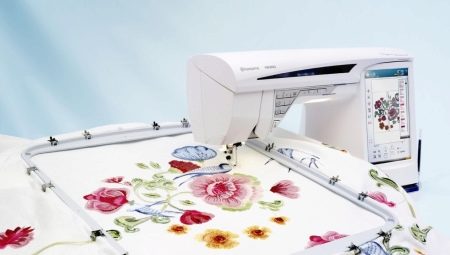Embroidery machines are a necessary and useful invention and are in high demand among needlewomen and craftsmen for sewing and repairing clothes. The high popularity of the equipment is due to its ease of use and great functionality.
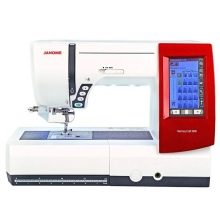
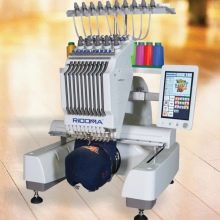
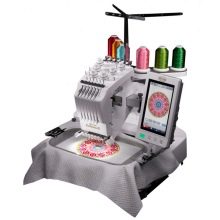
Main characteristics
Embroidery machines are complex automated machines that allow you to apply a drawing of any complexity to the fabric. Most samples are equipped with software, which allows you to upload a thumbnail image into the device’s memory, after which the machine transfers it to the canvas on its own.
To preview and adjust the location of the pattern on the fabric, the machines have a touch screen with a viewing angle of 180 degrees. On the screen in real scale, each line is clearly visible, which allows fully control the embroidery process and greatly simplifies the work of the machine operator.
Machines are able to embroider any image using blindfold, elastic and countersunk stitches.
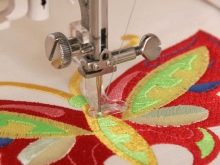
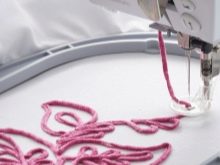

Each machine is equipped with a hoop, pulling the material, which are attached to the platform of the machine from one or two sides. More modern designs are equipped with built-in needle threaders and needle position switches. Most models have an automatic slider adjusting the embroidery speed. The machine itself slows down during the execution of long stitches, which ensures a more even thread position and improves the quality of embroidery.
The most modern designs are equipped with a button for trimming the thread, after clicking on which instant cutting of the upper and lower threads occurs without the use of scissors.This allows you to immediately proceed to embroidery the next fragment, which is very convenient for production on an industrial scale. An equally convenient additional function is start-stop button, which prevents the machine from starting when the foot is raised or the hoop is not installed. The indicator light will turn red until the error is resolved.
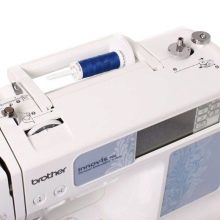
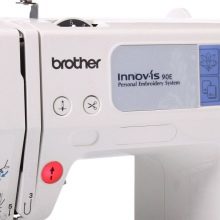
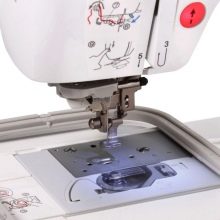
The principle of operation of embroidery machines is quite simple and is as follows: after the operator fixes the fabric in the hoop, the carriage begins to move relative to the two axes, and the needles located on it make punctures in the places determined by the program in accordance with the figure. Most modern professional models are able to work with all kinds of threads and with material of any density, and some of them can embroider even on felt boots. Machines are able to embroider in all known techniques: stitch, cross and half-cross, as well as in the style of Richelieu, patchwork and quilling.
Due to the availability of computer support, the units can embroider large batches of the same type of patterns, which makes them an indispensable type of equipment in sewing shops and other light industry facilities. Full automation of the process of professional designs can significantly reduce the amount of labor in enterprises, which ultimately leads to lower production costs. The operator only needs to set the threads of the desired colors and set the program. Next, the machine itself will select the desired color according to the sketch loaded into the computer and will change the order of thread use according to the scheme proposed by the program.


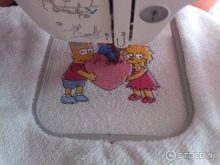
More simple machines designed for home use are able to work with only one thread and need the presence of a person. The operator has to control the execution of embroidery first with threads of one color, then, at the request of the computer, thread a thread of a different color and monitor the embroidery of the next element.
In addition, household samples are not equipped with a thread cutter, which is why the operator must remove the threads and cut too long broaches on the wrong side.
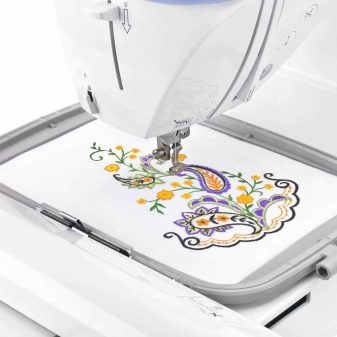
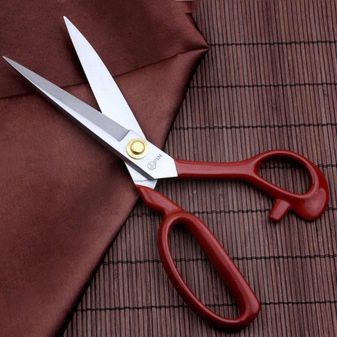
Species overview
Embroidery machines come in several forms: domestic, industrial and semi-professional.
Household
This type of embroidery equipment is presented single head machines designed to decorate clothes and textile items at home. Household units are divided into embroidery and sewing-embroidery. The former are intended exclusively for embroidery, while the latter are capable of working like a regular sewing machine. The size of the hoop on such machines usually does not exceed 30x18 cm, and the service life is much lower than on semi-professional and industrial designs.
The advantages of home machines are their affordable cost and ease of operation. The disadvantages include the impossibility of refueling several colors at once and the need for constant monitoring of the operation of the machine.
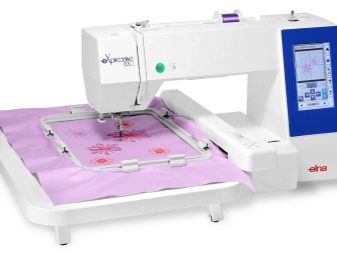
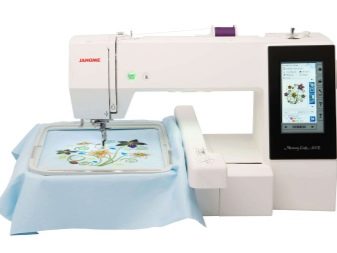
Industrial
These devices are represented by single, double and multi-head machines. By their functionality, they are divided into universal and highly specialized samples. And if the former are capable of carrying out any operations of different difficulty levels, the latter are intended for one of them, for example, for chain stitch or embroidery of logos on chevrons. Most industrial models are compatible with additional equipment, which significantly increases their functionality.
All units are different high reliability, a large field of the working surface and increased engine life. The latter quality allows the equipment to be operated in two or even three shifts with minimal maintenance interruptions.
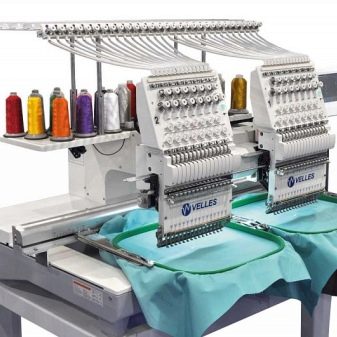
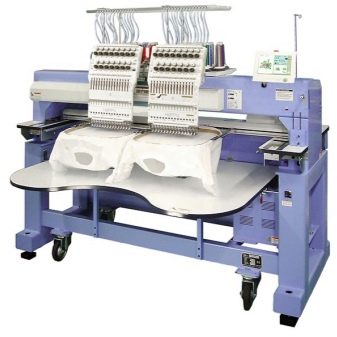
Semi-professional
Such machines are the most common type of embroidery equipment and are used by both housewives and masters of sewing shops and ateliers. Compared to home use cars These units are endowed with great functionality and have a high level of automation. This relieves staff of continuous monitoring of the operation of the apparatus and frees up labor for other operations. Most samples are fully compatible with various types of optional equipment, have a high sewing speed and are much cheaper than industrial counterparts.
With their help, you can not only embroider in the classical way, but also sew on sequins, embroider with a cord, and also use the boring technique (cutwork and welt finish).

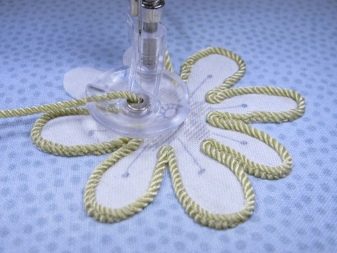
More modern designs have a large number of additional devicessuch as LCD backlight, thread cutter, stop-start button, automatic thread trimming, large internal memory, thread self-refueling device, thumbnail scaling function, thread end sensor and needle speed controller. The presence of a large number of convenient options makes semi-professional machines very convenient and comfortable to use, which significantly increases their popularity among small businesses.
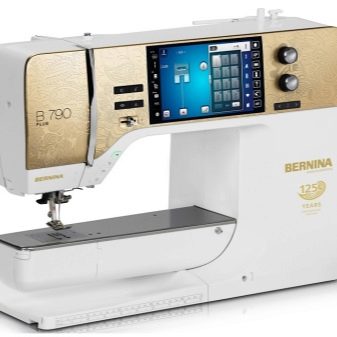
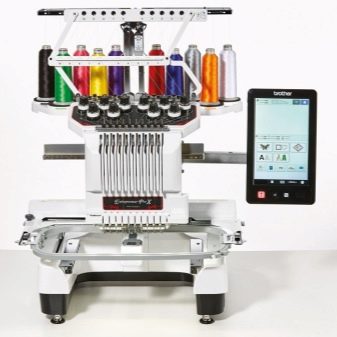
What threads and needles are suitable?
The quality of embroidery of the embroidery machine is largely determined by the correct selection of threads and needles. In the case of a clear discrepancy between the thickness of the threads with the type of fabric and the size of the needle, the stitches will be uneven and ugly. Moreover, Incorrectly selected threads can cause them to break continuously.
Typically, a table of thread thickness and needle size is provided in the accompanying documentation for the machine, but if the instruction is lost or missing, then you can use the general rules for choosing threads. It should be noted immediately that embroidery threads differ from ordinary sewing and have a different density and structure of the fibers.
In this regard, you only need to refuel the machine special embroidery threads and do not use sewing. The following are the main varieties of thread for embroidery and their characteristics.
- Viscose threads have an artificial origin and are designated by marking Viscose or Rayon. The most famous manufacturer of viscose products is the company Madeira. These threads are soft and beautiful shine, available in a wide range of colors and a wide variety of sizes. They adhere well to the fabric, do not form loops and are highly resistant to wet and dry cleanings.
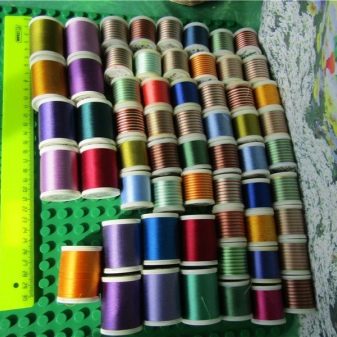
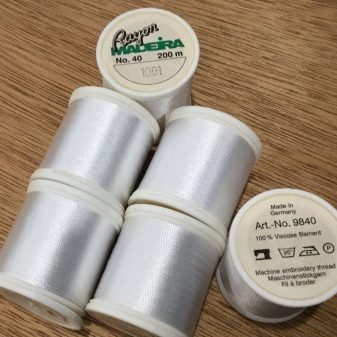
- Polyester Thread also have a synthetic base and are indicated by Polyester. They are distinguished by a beautiful and even shine, although there are also matte options among them, which are designated as Frosted matt. Such threads are much stronger and more elastic than viscose and cost much less. Clothing with polyester embroidery can be bleached by any means without harm to the structure of the threads.
Among the disadvantages of polyester yarns, one can note a tendency to loop and possible deformation of the pattern some time after embroidery.
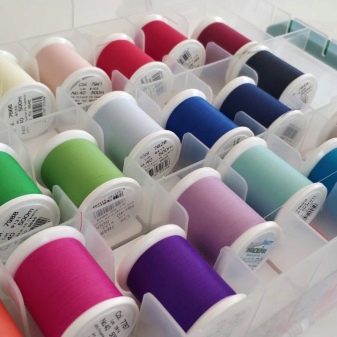
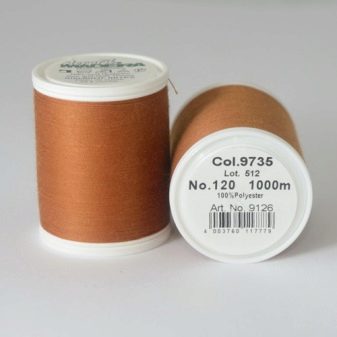
- Cotton threads characterized by a dull surface and lack of gloss. Cotton does not tolerate bleaching and strongly contaminates equipment with the finest cotton dust, which is not characteristic of synthetic threads. Among the minuses can be noted and limited colors, as well as a somewhat rustic appearance of the finished embroidery. The advantages include low cost and the absence of a tendency to form loops.
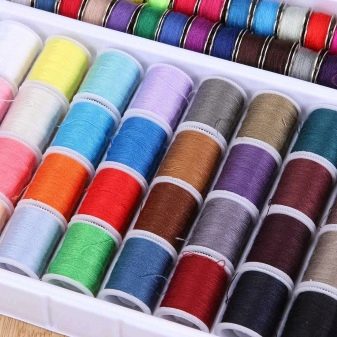
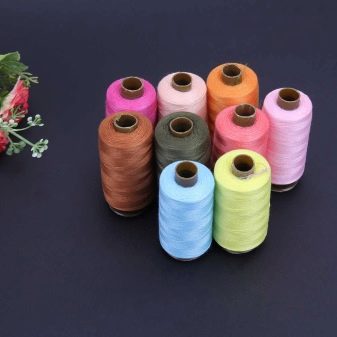
- Metallized thread It has a beautiful sheen and poor flexibility. It can cause significant harm to equipment and is designed to work exclusively at low speeds. Besides, metallized threads do not tolerate bleaching and are not suitable for all fabrics.
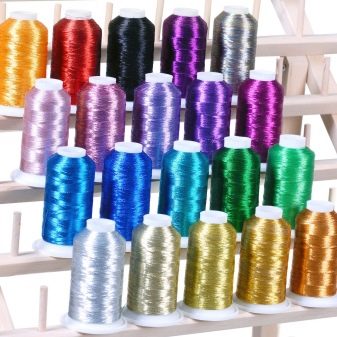
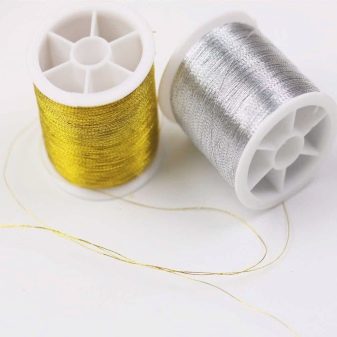
When choosing threads for an embroidery machine, attention should be paid to their thickness. The best option is size 40, and the number has feedback with the thickness. So, the thicker the thread, the lower the numerical index it is indicated, and vice versa - thin threads have a higher number.The fact that threads of the same size but of different composition visually differ in thickness.
Numbers 40-60 are usually used for the upper thread, and from 80 to 200 for the lower thread. However, in this matter, everything is very individual and depends on the material and the machine settings. Often the machine begins to tear a thinner thread, which is why it has to be changed to a thicker one. The thicker the bobbin thread, the more difficult the setting of the upper thread and the more often you need to change the bobbinBut the embroidery is more dense and attractive. Experienced embroiderers believe that the best option for the bobbin thread is number 80.

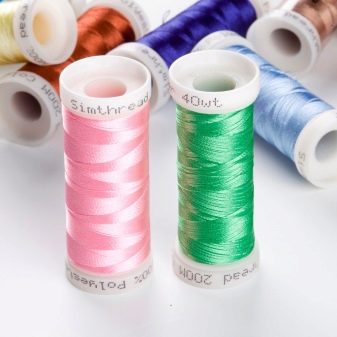
As for the manufacturers of thread for embroidery machines, a large number of positive reviews has the products of companies RainBow and Gunold. Their threads are available in a wide range, get along well with delicate fabrics and are “friends” with the upper thread. When choosing threads, professionals recommend paying more attention not to their thickness, but to the density, since a thread that is thin in appearance often has a very high density and vice versa.
When choosing needles, you must consider so that their size matches the thickness of the threads. For example, when embroidering on lightweight fabrics with cotton threads No. 80-100 or polyester No. 60-80, a needle of size 9-11 (70-80) is suitable. To work on medium fabrics using cotton threads No. 50-80 or polyester No. 50, you need a needle No. 11-14 (80-90).
Heavy fabrics are embroidered with cotton thread No. 40-50 or polyester No. 50, using needles No. 14-16 (90-100).
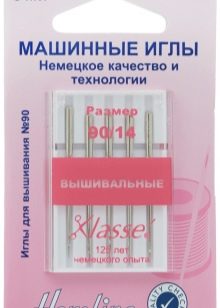
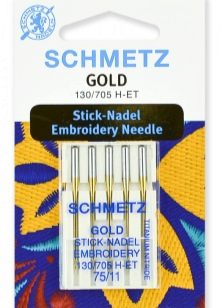
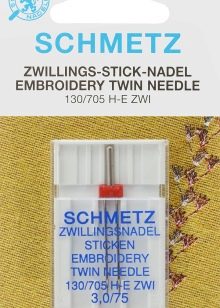
Manufacturers
The modern market for sewing equipment offers a huge selection of embroidery machines from well-known manufacturers. Below is the rating of the most popular designs that occupy the first lines of popularity according to online stores.
Bernina
A company from Switzerland is considered a leading manufacturer of sewing and embroidery equipment and is the only manufacturer of equipment that has retained its production in Europe. Semi-professional model is very popular. Bernina Aurora 450, Designed not only for embroidery, but also for sewing. The model is equipped with the latest software and has 163 sewing programs.
More than 400 different images and four sewing alphabets are stored in the memory of the machine, which allows it to be used for conveyor embroidery of chevrons and logos. The machine is equipped with a movable hoop with a working field of 25.5x25.5 cm and is capable of working at a speed of up to 900 stitches per minute. Among the additional options can be noted scaling, mirroring and layout design. The unit is equipped with regulators of thread tension, raising the presser foot and the force of puncture of the material, and the connection to the computer is via the USB port. The cost of the car is 120,000 rubles.
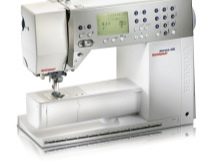
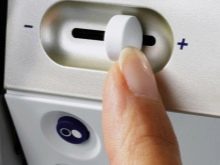
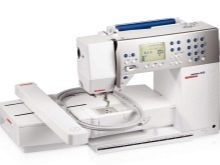
Husqvarna
The company from Sweden was established in 1689 and is one of the oldest manufacturers of embroidery machines in the world. Its products are in high demand and are well known in our country. Among the semi-professional models can be noted a sewing and embroidery machine Husqvarna Designer Topaz 50capable of performing 261 operations. The unit can make 9 types of loops and copes with absolutely all materials.
The hoop size is 36x20 and 12x12 cm, which allows you to perform both large patterns and small chevron embroidery. Downloading new drawings is done using the USB port, there are options for editing and combining images, and there is also the possibility of mirroring thumbnails. The program includes 5 built-in alphabets and the function “sewing adviser”.
Sewing speed - 1,200 stitches per minute, cost - 155,000 rubles.
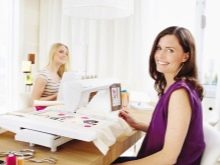
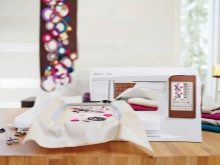
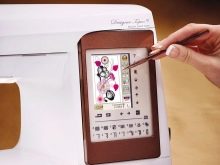
Velles
The Russian brand is well known both in our country and abroad. The company produces sewing and embroidery equipment and supplies it to the domestic market reliable and modern samples. As an example, consider a single-head embroidery machine Velles VE 15C Next, Designed for embroidery on any type of clothing, including hats. The model is compact and light in weight, due to which it can be installed in computer embroidery workshops and small ateliers.
The unit is able to use up to 15 different colors, automatically switching them among themselves according to the sketch. The maximum speed is 1,000 stitches per minute, there are automatic functions for replacing needles and thread trimming, the machine can memorize 980,000 stitches or 99 patterns. The device is equipped with 12 hoops, among which there are both rectangular and round options. Engine power - 400 W, product weight - 157 kg, cost - 340,000 rubles.
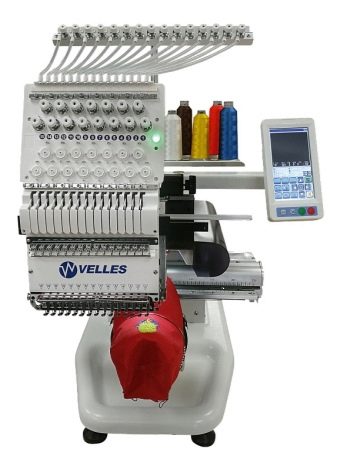
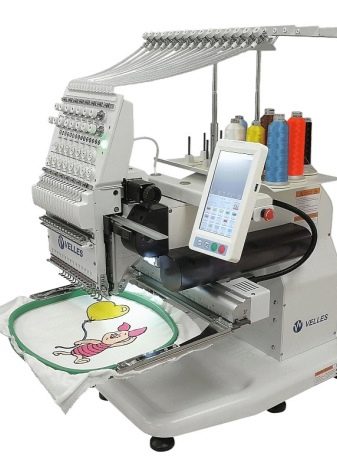
Tajima
Japanese industrial embroidery machine Tajima TSMX - 601 (460x550) S belongs to the category of expensive equipment and costs $ 16,000. This vestibule model does not have a shuttle device and embroiders with a chain stitch. A distinctive feature of such machines is the use of only one thread, which is why the pattern is noticeably different from the image made on a conventional shuttle machine, and it turns out to be very voluminous and convex.
Embroidery on such machines is done with a soft and fluffy thread, and the chain stitch technique does not form a rigid substrate from the wrong side. Thanks to the ability to create a high terry stitch pattern Perfect for decorating children's clothes with beautiful three-dimensional embroidery. The speed of work is 650 stitches per minute, the needle adjustment has 10 positions, and the processor memory contains information on 10 million stitches.
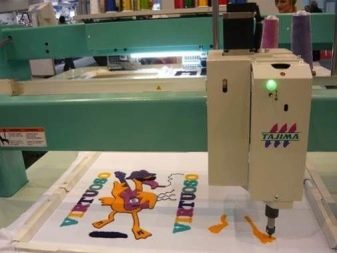
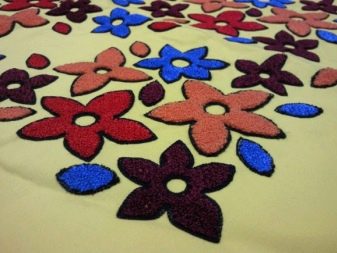
Happy profi
Single Head Embroidery Machine equipped with a touch screen (HCS2) and is available in Japan. The model belongs to the industrial class and is designed for intensive serial embroidery. Due to the presence of a large number of needles (12 pieces), the machine can embroider multi-color compositions without spending time manually changing the threads. Unit speed is 1,000 stitches per minute. The machine is equipped with two types of hoops - rounded, 32x32 cm in size and round, 15 cm in diameter.
The weight of the product is 42 kg, the memory is 2,000,000 stitches or 250 images, the cost is 589,000 rubles.
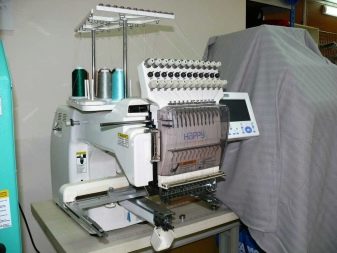
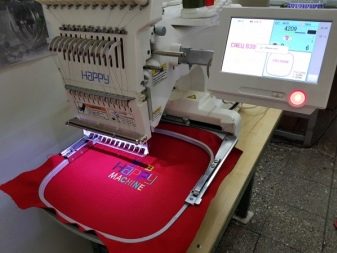
Ricoma
Embroidery machine EM 1010 is a representative of the American brand and is very easy to use. The model is equipped with the “built-in adviser” function, thread break sensors, a ten-needle carriage, modern software and a touch screen. The hoop size is 36x20 cm, the embroidery speed is 1,000 stitches per minute.
The machine remembers 20 million stitches and can embroider on caps. The model is well suited for small businesses in sewing and repairing clothes, as well as for workshops for computer embroidery. The cost of an embroidery machine is 379,900 rubles.
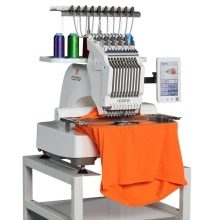

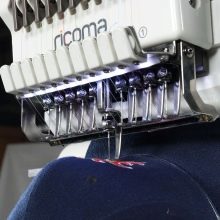
Jack
Model CTF1201 Designed for embroidery on hats, finished products, clothing, uniforms, chevrons and even shoes. The model is equipped with automatic thread trimming functions, remembers 99 patterns (1,000 stitches) and weighs 145 kg. The product is equipped with three hoops, 2 of which have a size of 33x29 cm, and the third - 33x55 cm.
The machine is very reliable, sturdy and designed for continuous operation with short breaks. The cost of the machine varies from 397,000 to 420,000 depending on the supplier.
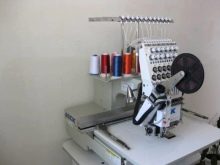
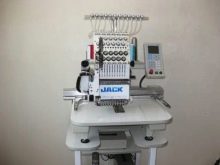

Barudan
Japanese single head embroidery machine BEVT- S901 CA is different light weight and compact size. The model is equipped with a servo drive, nine needles, practically no noise and is characterized by high quality embroidery. The machine is equipped with a cord embroidery device, a boring device (Richelieu technique), a cylindrical frame and a swinging shuttle.
The latter is intended for embroidery with woolen threads, which is not found in all models. When working with clothes, the machine is able to embroider at a speed of 1,200 stitches per minute, and when embroidering baseball caps, up to 1,000 stitches per minute.The machine has a memory capacity of 1,000,000 stitches, a weight of 76 kg and a cost of 900,000 rubles.
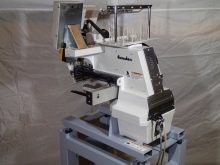

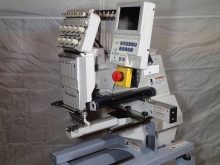
Brother
Sewing and embroidery budget model NV-90 E is different accessibility and attractive design. The machine can perform beautiful patterns on curtains, decorate clothes with embroidery and create logos. The unit has 70 built-in designs and 5 fonts, equipped with a needle threader and a long cord.
The size of the hoop is 10x10 cm, the cost of the machine is 32,000 rubles.
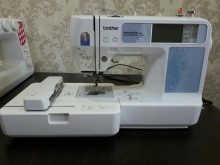
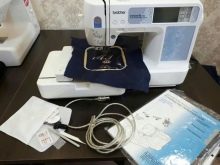
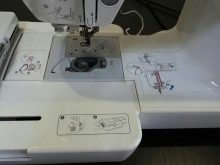
How to choose?
When choosing an embroidery machine, you need to pay attention to a number of important points.
- First of all, you need to determine the class of the product. For home use, household models worth up to 100,000 rubles are suitable, for an atelier or computer embroidery workshop, an ideal option is a two-head semi-professional model worth up to 300,000 rubles, and an industrial design worth up to a million rubles will be needed for a sewing workshop.
- Another significant selection criterion is the size of the hoop. The maximum area of the working field depends on it, therefore, the size of the picture, the width of which will be limited by the length of the platform. The smallest hoops with a size of 10x10 cm are installed on budget household models, while on powerful industrial designs their size exceeds 26x40 cm.
- If the machine is bought for business, then you need to pay attention to the speed of embroidery. Most semi-professional and industrial devices are capable of making 1,000 or more stitches per minute, which is quite enough for mass production. The speed of household machines is much lower and reaches 400-500 stitches per minute.
- Pay attention to tissue fixation, which is the weak point of many machines with large rectangular hoops. Depends on this parameter how accurately the pattern will be applied and whether the stitches will not shift when embroidering. Particularly often, sagging tissue sites located at the maximum distance from the mount suffer from image distortion. Therefore, the best option is to purchase a model in which the hoop is made in the form of an oval.
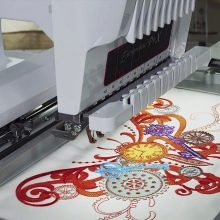
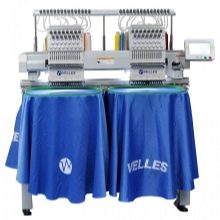
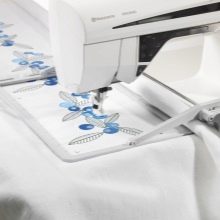
Operational Features
Using embroidery machines begin with future image design developmentwhat can be done on a home computer. Then the picture is edited and sent via USB-port, CD-ROM or Wi-Fi to the machine’s memory. Next, the design is projected onto the fabric previously fixed on the hoop, and placed in the right place.
The built-in computer is responsible for the correct location of the sketch within the hoop, which allows you to rotate the picture 360 degrees, as well as reduce or increase it. The system automatically divides too large patterns into several fragments, which are subsequently embroidered in order of priority.
In addition to adjusting the image, the computer displays information about the operation of the machine on the display and tells the operator which thread and needle to choose.

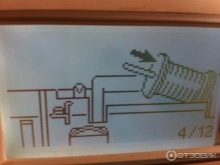
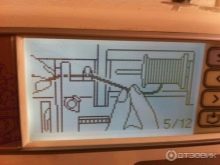
Many modern samples have video instructions in their memory, which show in detail how to correctly perform this or that operation. Usually, after viewing them, users have no questions about the operation of the machines, especially since in many samples the embroidery process is fully automated.
The exception is budgetary sewing and embroidery models that require manual dressing, thread trimming and constant monitoring of the machine. After the pattern is corrected and projected onto the selected tissue site, the operator presses the “start” button and the machine proceeds to embroider. After the unit does its job, the product is removed from the hoop and ironed with steam.
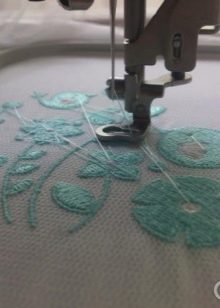
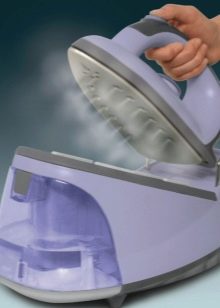
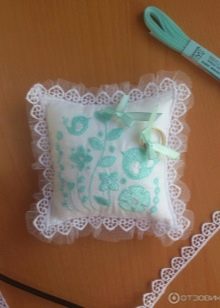
Tips
In order to make machine embroidery beautiful and neat, It is necessary to take into account the advice of experienced craftsmen.
- If there are errors in the stitch, then the matter is most likely in the mismatch of thread and fabric.
- If stitches tighten the fabric or the machine starts to loop, then the cause may be poor adjustment of the lower and upper threads.
- The lower thread should always be either thinner than the upper, or the same size with it. Otherwise, the upper thread will tear and pull the fabric together.
- When choosing needles, you should focus on the quality of the fabric and the size of the threads. Too thick a needle will leave ugly holes on the material, and too thin can break quickly.
- When machine embroidering large items, you must use the stabilizer - non-woven material that is laid under the product or placed on top. Such a lining is especially needed when embroidering on terry cloth. It reliably restrains the pile and prevents loops of fabric from entering the embroidery. As a stabilizer, special films are usually used with a water-soluble or thermally degradable texture, which are removed after work. However, in some cases, the non-woven lining is left on the product, where it provides embroidery support and helps maintain the shape of the pattern.
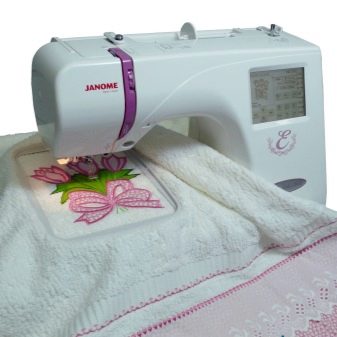
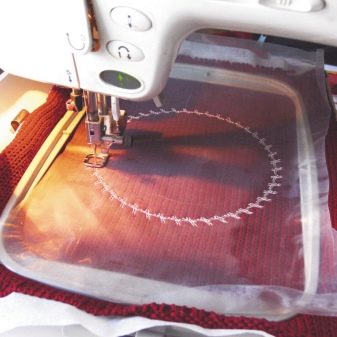
See how to choose an embroidery machine in the next video.
